My B-17 Flight Photos
Here we go, photos along with some comments i posted with them on my facebook page. Enjoy, I know I did. It truly was the trip of a lifetime.
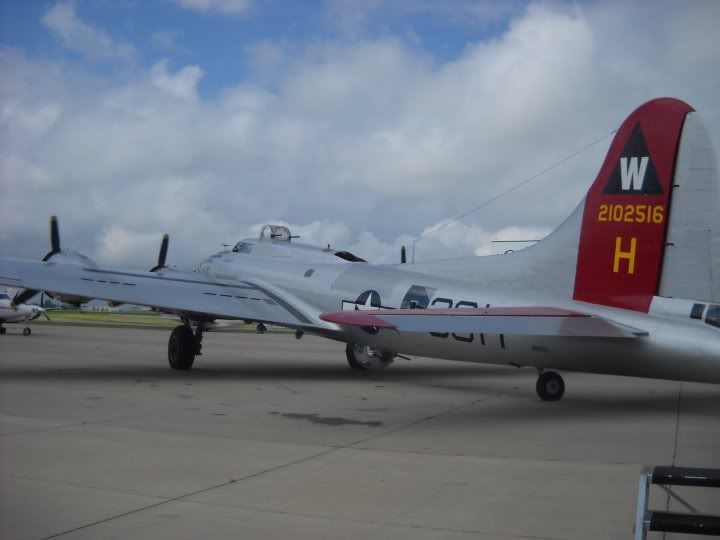
My ride for the afternoon: B-17 "Aluminum Overcast". She was completed and delivered on May 18, 1945. To late to see combat, she was used as an aerial mapping platform for the forest service. In 1978, she was bought by a group of investors with the goal of returning it to her combat outfitting. She was then donated to the EAA in 1983. She is one of 15 that are still flying today out of 12,000 built during WWII.
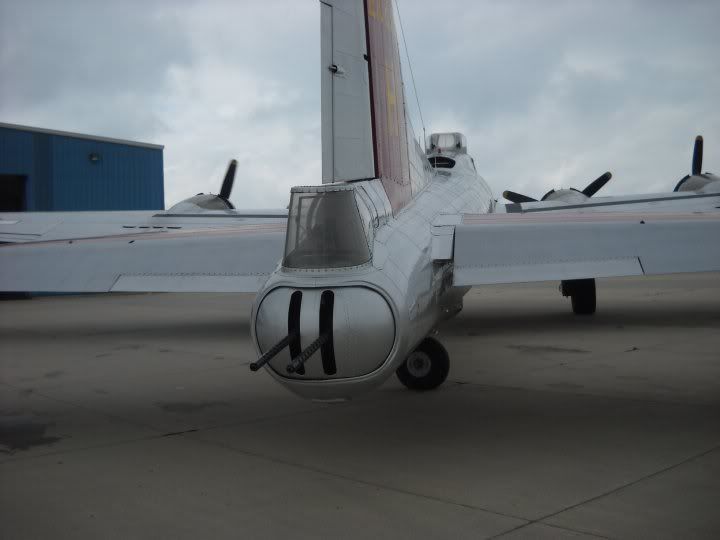
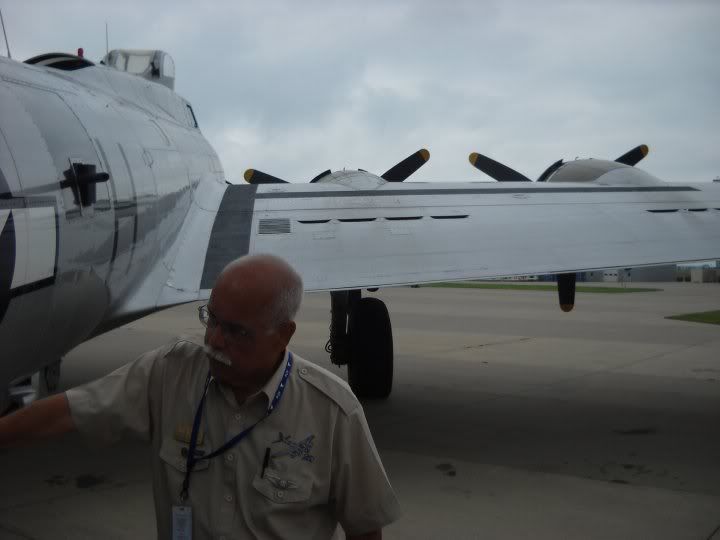
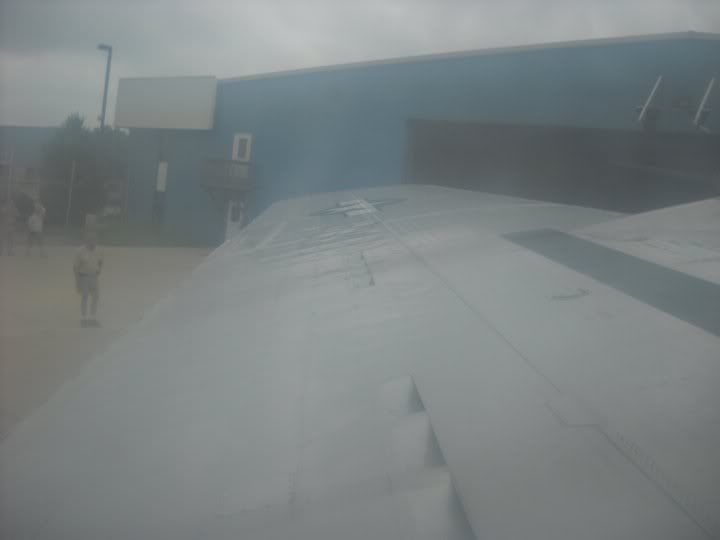
This was my view out the window of the Radio Room for take off.
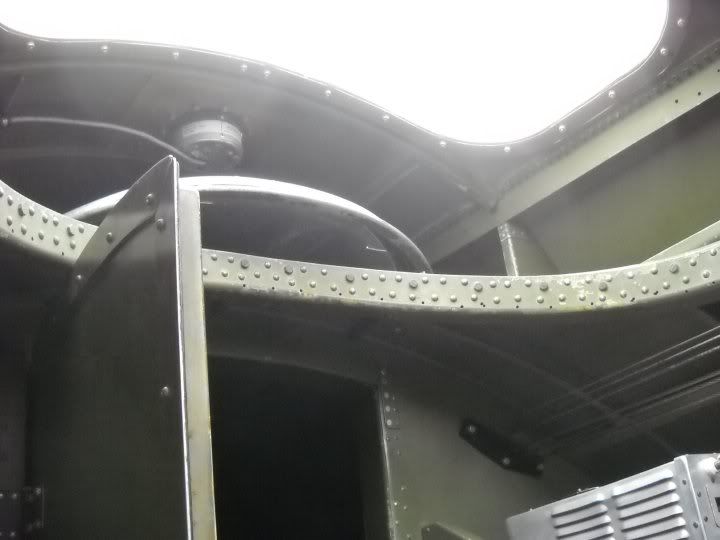
Looking up in the radio room, the top hatch was open during flight, made things a bit noisy. I refused ear plugs... I figure I wanted to feel the entire experience... the crew used to go up without ear plugs, why should I wear them.
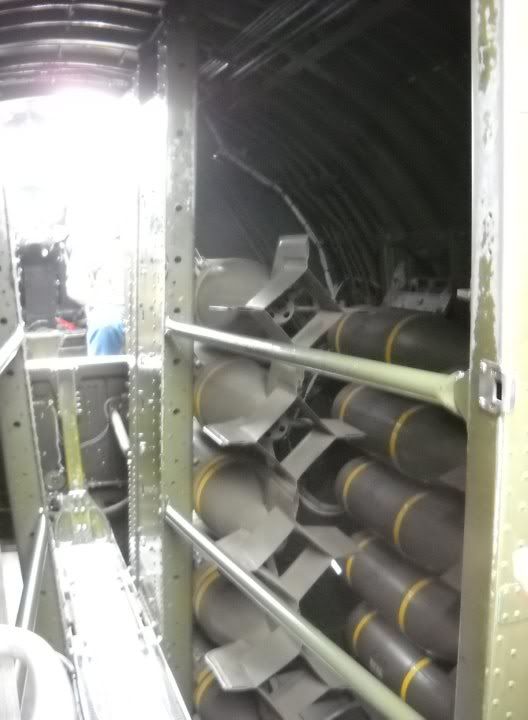
The bomb bay. It was much smaller than I thought it would be. Ive built models of the B-17 countless times... and always assumed it was bigger. During WWII, in Europe, the USAF B-17 Bomber groups dropped 640,000 tons of bombs while the British RAF dropped 608,000 tons. I just would have figured the bomb bays would have been bigger. It speaks to how many planes were up, and how many flights they flew.
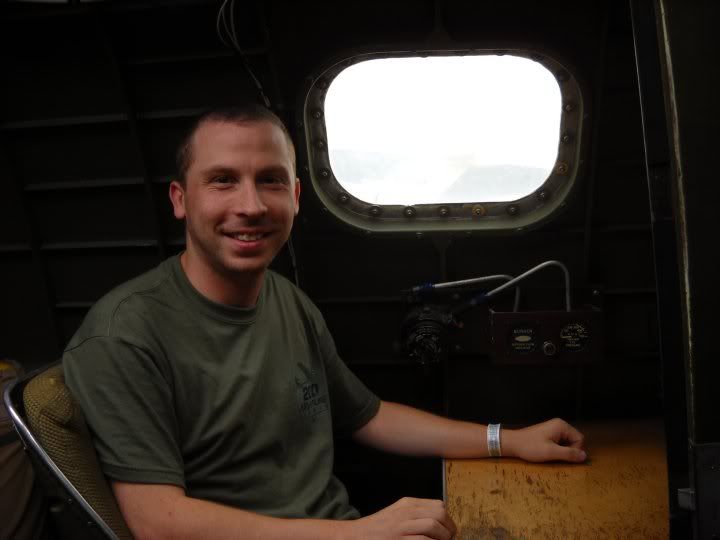
Me in the radio room. Even had a little morse code button in front of me. The radio room is behind the bomb bay, which is behind the cockpit.
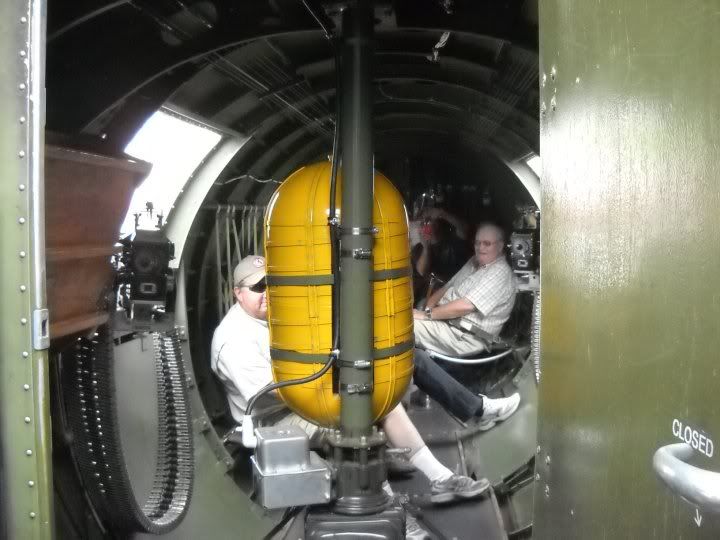
Photo taken from my seat in the radio room aft. This is the main body of the plane. The yellow tank is oxygen for the ball turret gunner.

Radio room toys. And above them are a series of wires. Yup... you guessed it if you know planes at all. Those wires are connected to the controls in the cockpit... and back to the flight control surfaces, rudder, elevator and such. Catch a bullet in the body of the craft that clips a wire... no controls...

The cockpit!
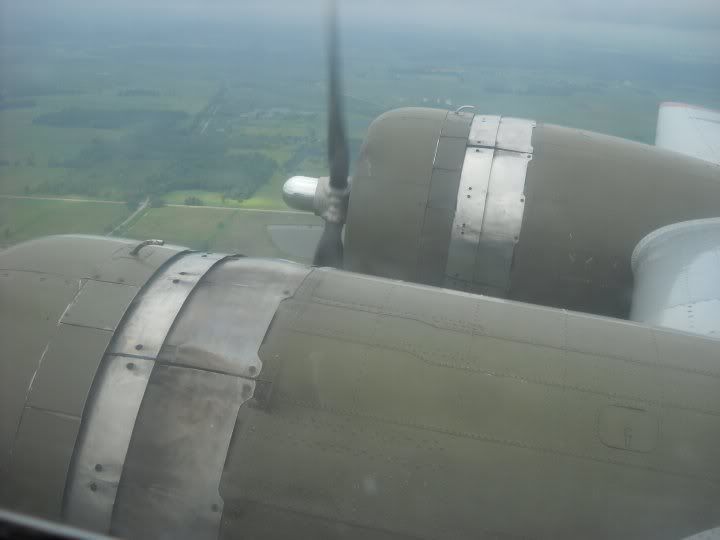
View of the engines from the cockpit.
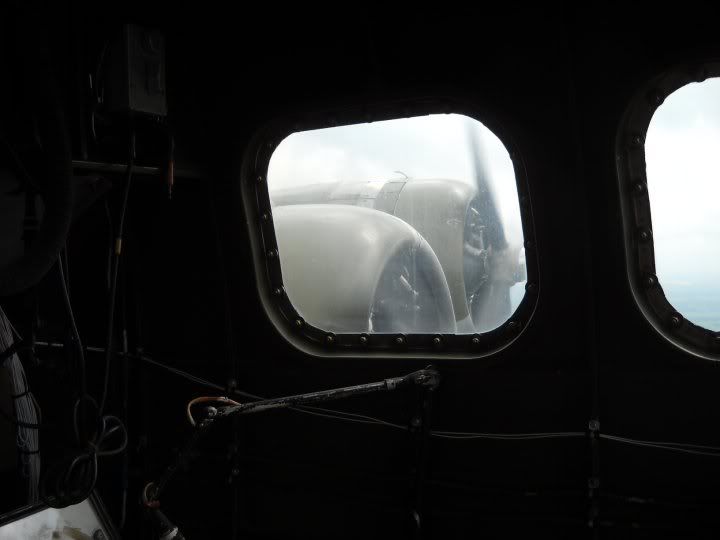
The nose area, forward and below the cockpit. The bombardier and navigator were stationed here. This was looking out at the engines.
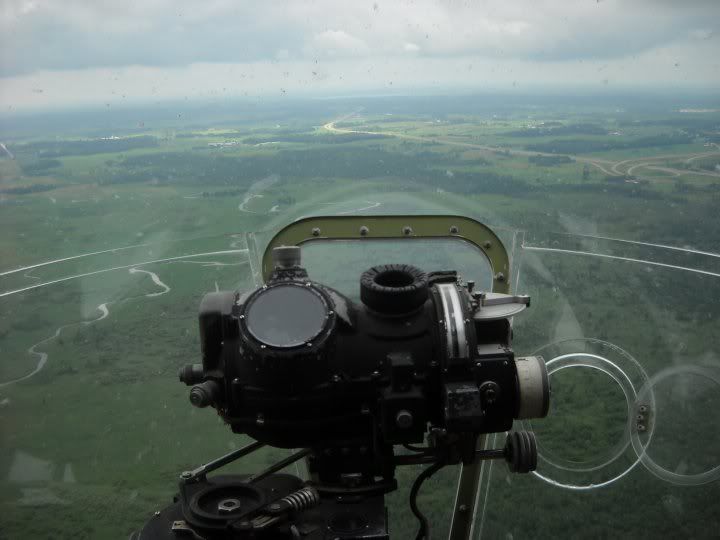
The nose area, forward and below the cockpit. The bombardier and navigator were stationed here. Looking forward out the nose of the plane. Best view in the house, and one of the most dangerous for the crew as well.
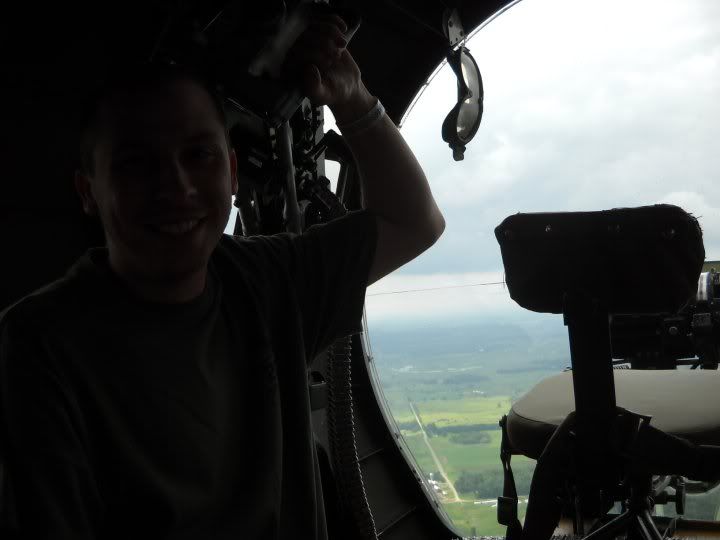
Very dark photo of me in the bombardier area. Ill try to lighten this pic up...
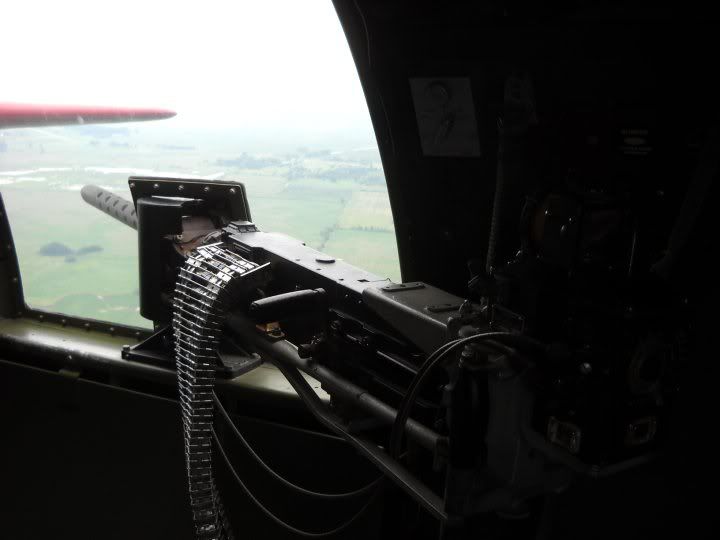
Side guns.
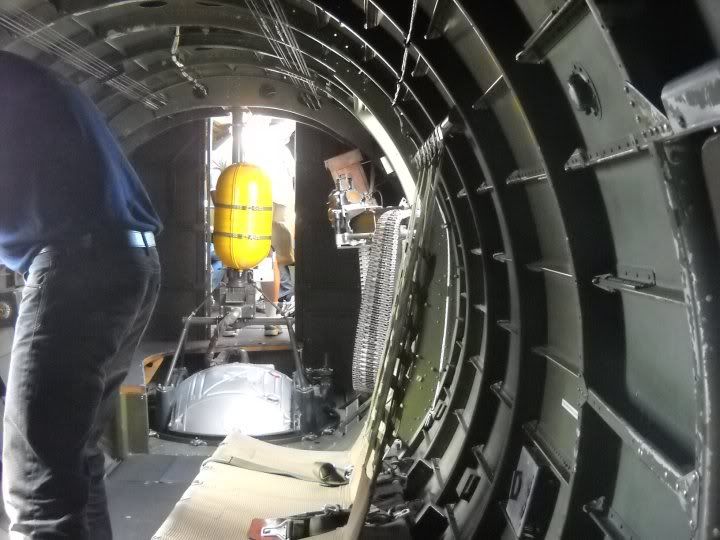
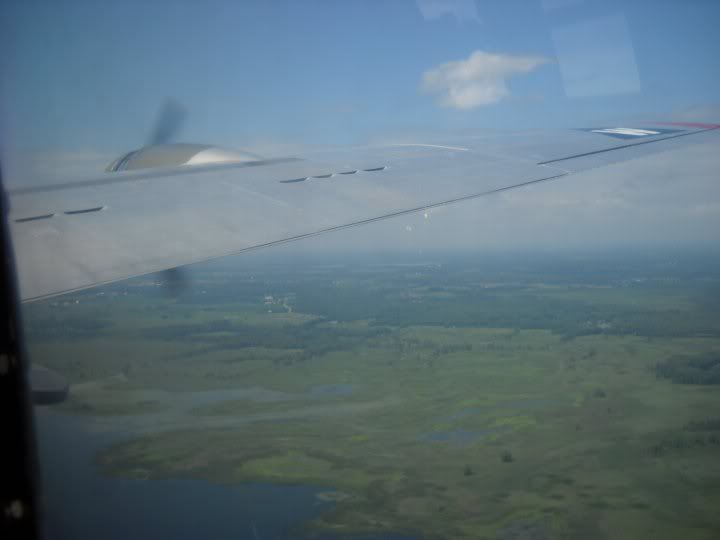
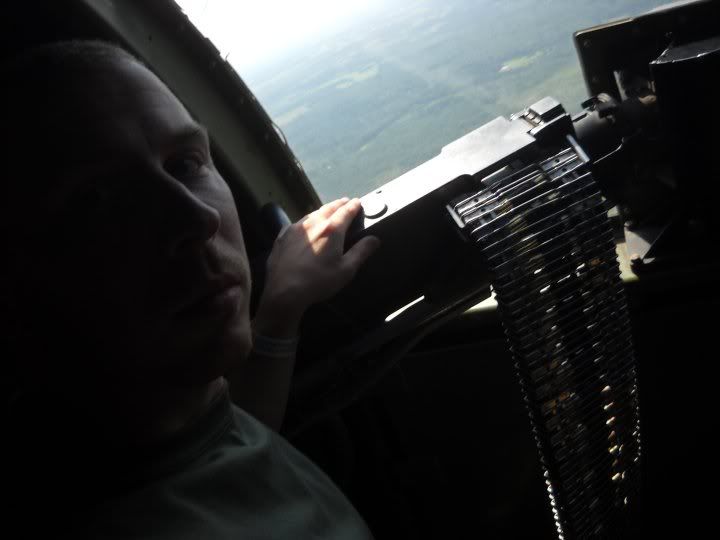
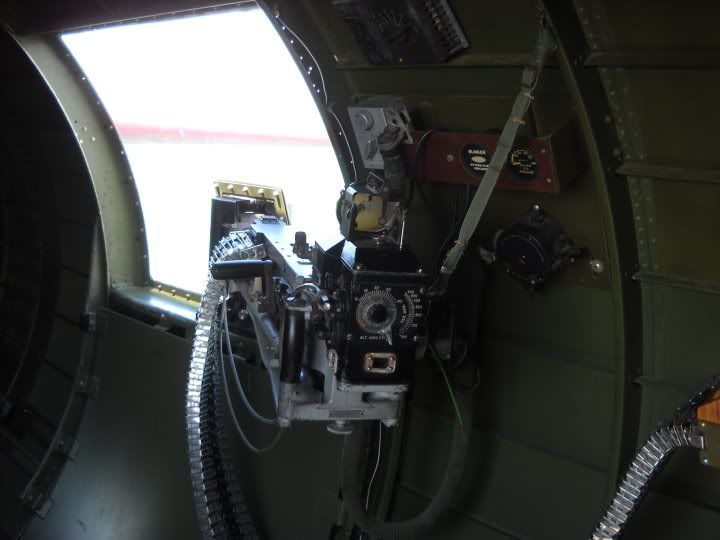
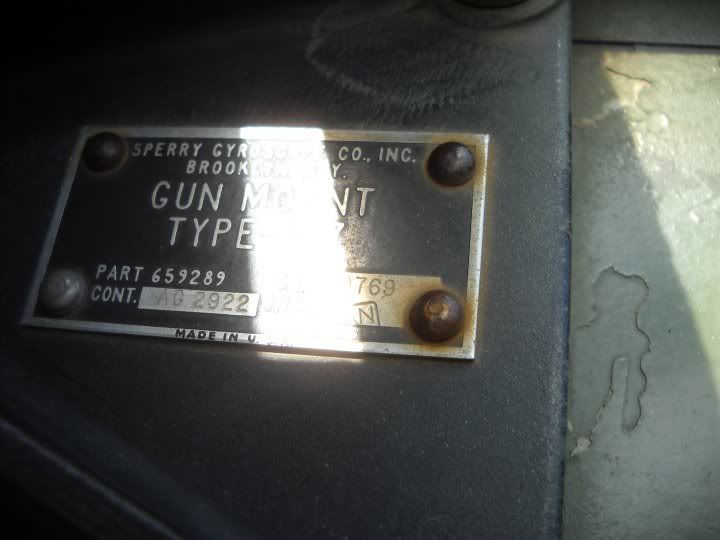
Please note: Gun mount made in brooklyn NY!!!
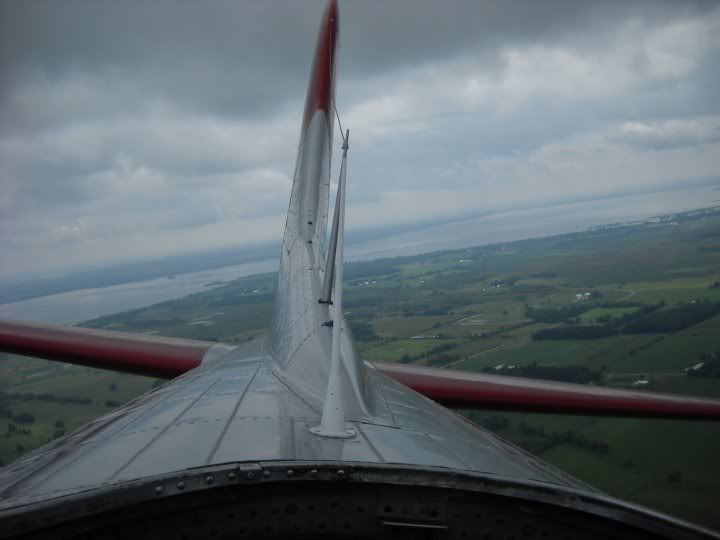
This was looking aft from the radio room, out the open hatch. We all took turns taking photos, with people bracing us from either side so we didnt get sucked out the top. about 186 MPH was pretty windy....
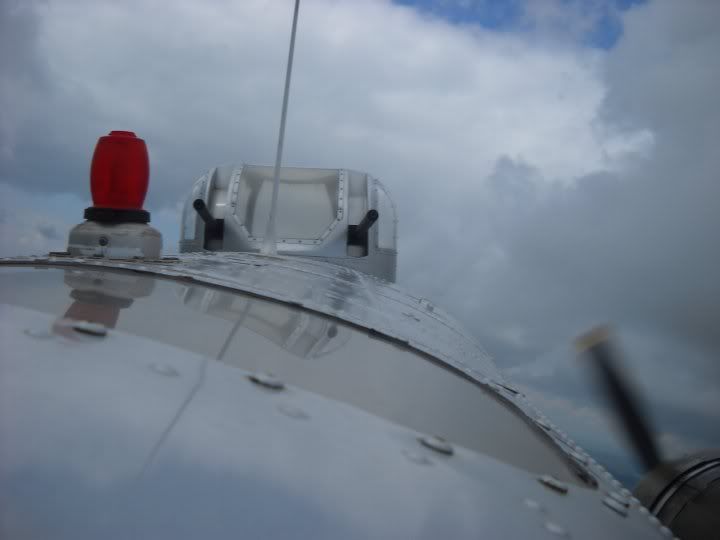
Looking forward out the hatch, at one of the front gun turrets.
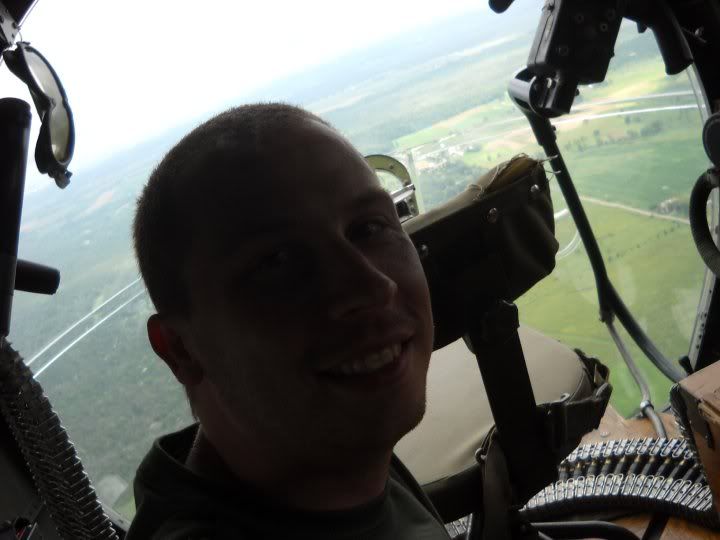
Me again in the bombardier area. Really was amazed by the view from here.
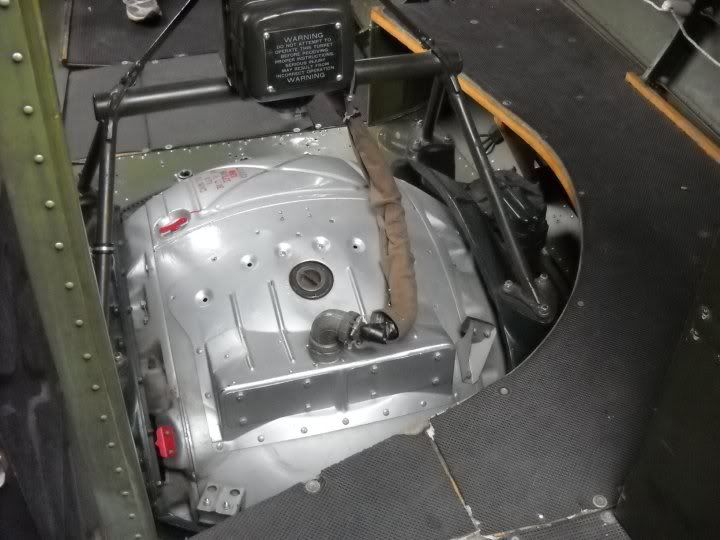
The "Ball Turret". Best and/or worst place to be on the plane. This turret is only accessible while the plane is on the ground. The guy gets in, and is in the fetal position, and stuck in there for the entire flight (8-13 hours). His back was up against very heavy armor, one of the best protected spots on the plane. BUT... if the landing gear was lost and the plane landed without it... they ended up landing ON the ball turret, crushing the guy in side. Was tough for the crew to have to do this to a buddy.
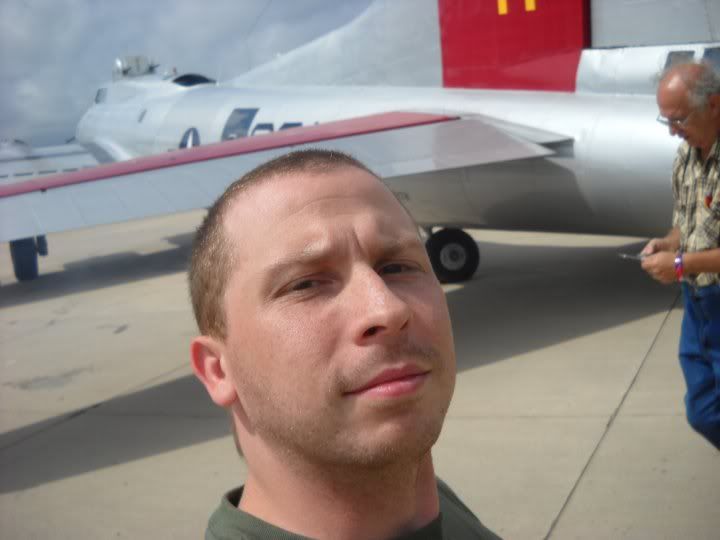
Me and my new friend.
I got chills all over again looking through these.

My ride for the afternoon: B-17 "Aluminum Overcast". She was completed and delivered on May 18, 1945. To late to see combat, she was used as an aerial mapping platform for the forest service. In 1978, she was bought by a group of investors with the goal of returning it to her combat outfitting. She was then donated to the EAA in 1983. She is one of 15 that are still flying today out of 12,000 built during WWII.



This was my view out the window of the Radio Room for take off.

Looking up in the radio room, the top hatch was open during flight, made things a bit noisy. I refused ear plugs... I figure I wanted to feel the entire experience... the crew used to go up without ear plugs, why should I wear them.

The bomb bay. It was much smaller than I thought it would be. Ive built models of the B-17 countless times... and always assumed it was bigger. During WWII, in Europe, the USAF B-17 Bomber groups dropped 640,000 tons of bombs while the British RAF dropped 608,000 tons. I just would have figured the bomb bays would have been bigger. It speaks to how many planes were up, and how many flights they flew.

Me in the radio room. Even had a little morse code button in front of me. The radio room is behind the bomb bay, which is behind the cockpit.

Photo taken from my seat in the radio room aft. This is the main body of the plane. The yellow tank is oxygen for the ball turret gunner.

Radio room toys. And above them are a series of wires. Yup... you guessed it if you know planes at all. Those wires are connected to the controls in the cockpit... and back to the flight control surfaces, rudder, elevator and such. Catch a bullet in the body of the craft that clips a wire... no controls...

The cockpit!

View of the engines from the cockpit.

The nose area, forward and below the cockpit. The bombardier and navigator were stationed here. This was looking out at the engines.

The nose area, forward and below the cockpit. The bombardier and navigator were stationed here. Looking forward out the nose of the plane. Best view in the house, and one of the most dangerous for the crew as well.

Very dark photo of me in the bombardier area. Ill try to lighten this pic up...

Side guns.





Please note: Gun mount made in brooklyn NY!!!

This was looking aft from the radio room, out the open hatch. We all took turns taking photos, with people bracing us from either side so we didnt get sucked out the top. about 186 MPH was pretty windy....

Looking forward out the hatch, at one of the front gun turrets.

Me again in the bombardier area. Really was amazed by the view from here.

The "Ball Turret". Best and/or worst place to be on the plane. This turret is only accessible while the plane is on the ground. The guy gets in, and is in the fetal position, and stuck in there for the entire flight (8-13 hours). His back was up against very heavy armor, one of the best protected spots on the plane. BUT... if the landing gear was lost and the plane landed without it... they ended up landing ON the ball turret, crushing the guy in side. Was tough for the crew to have to do this to a buddy.

Me and my new friend.
I got chills all over again looking through these.

Comments
Thanks for sharing....
Marty